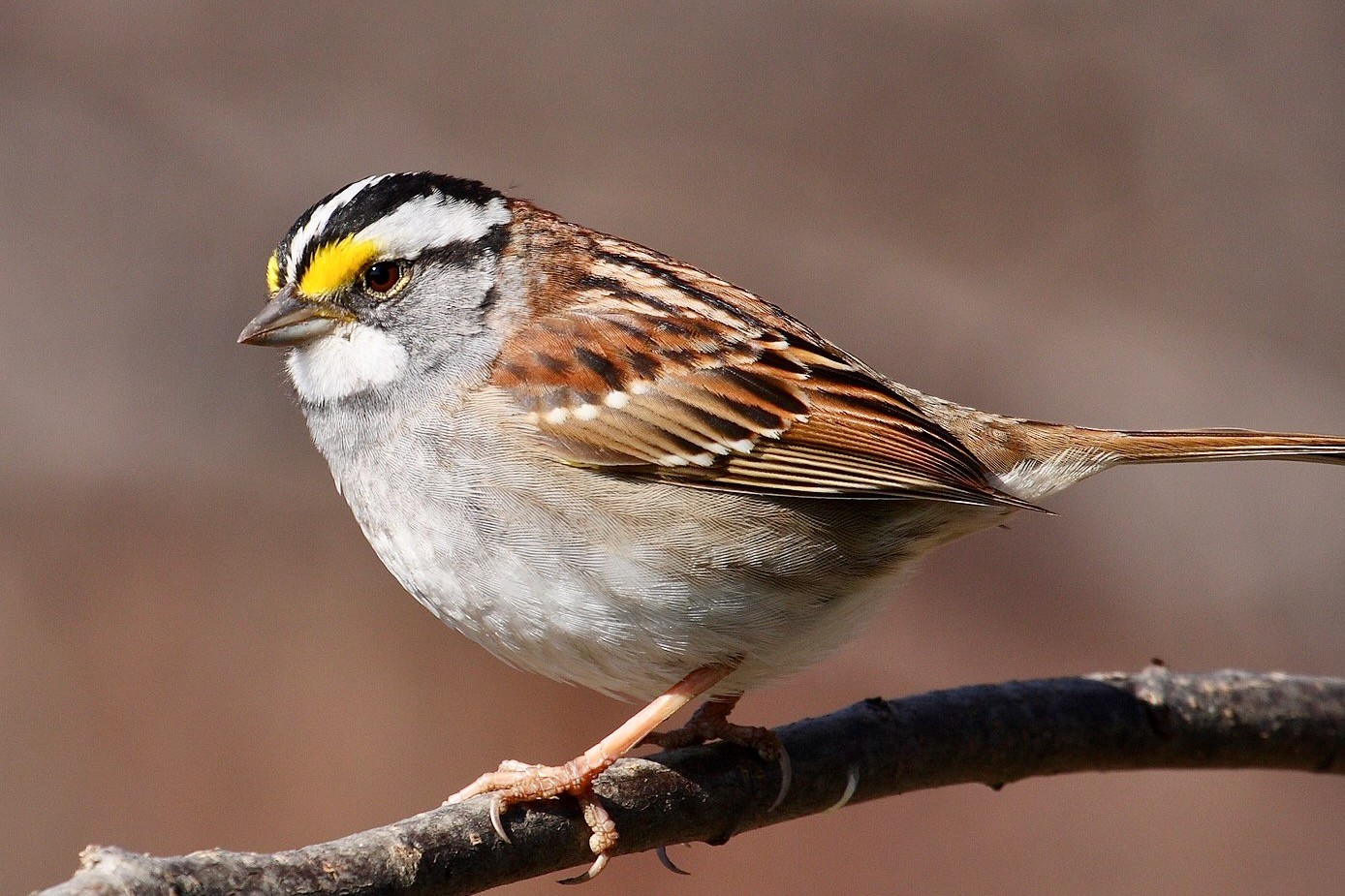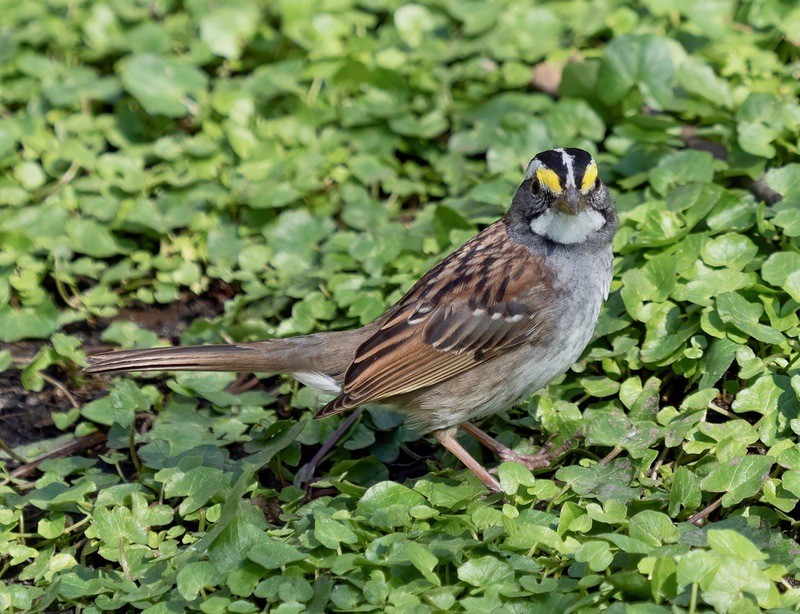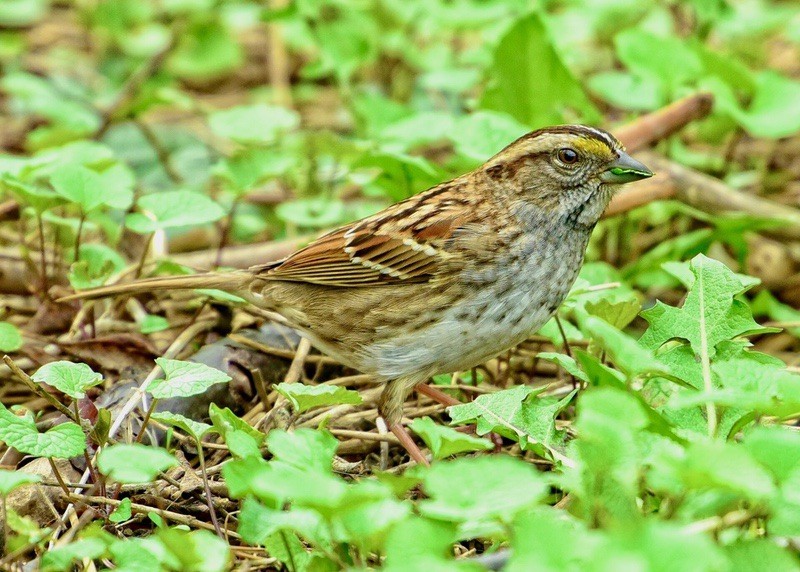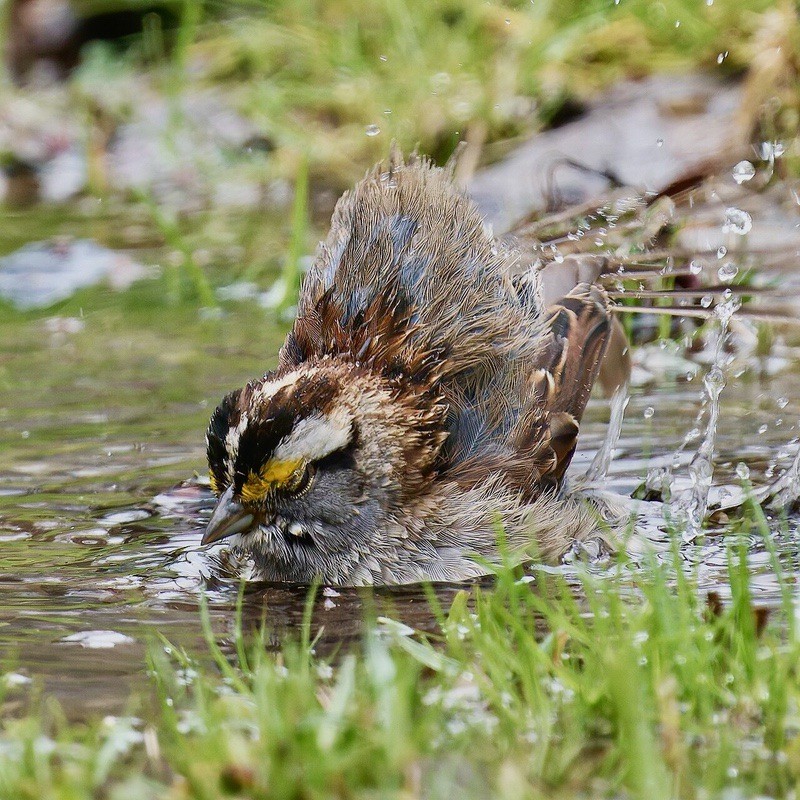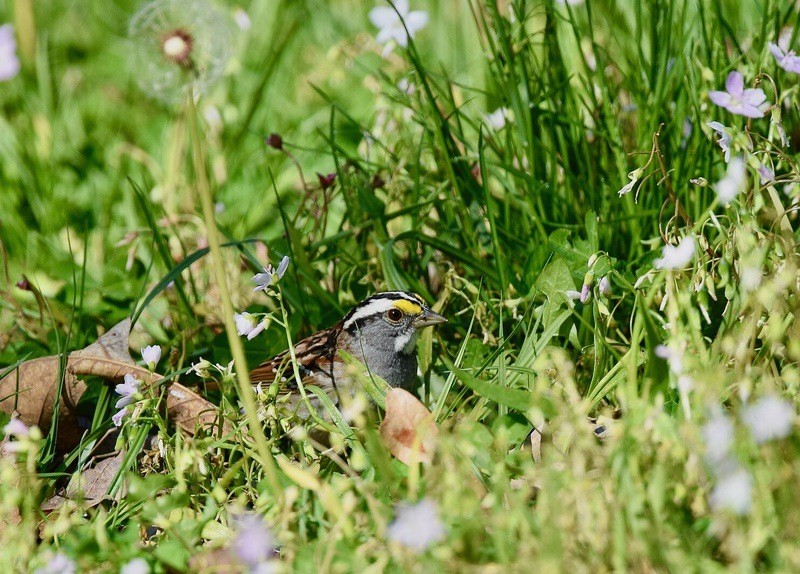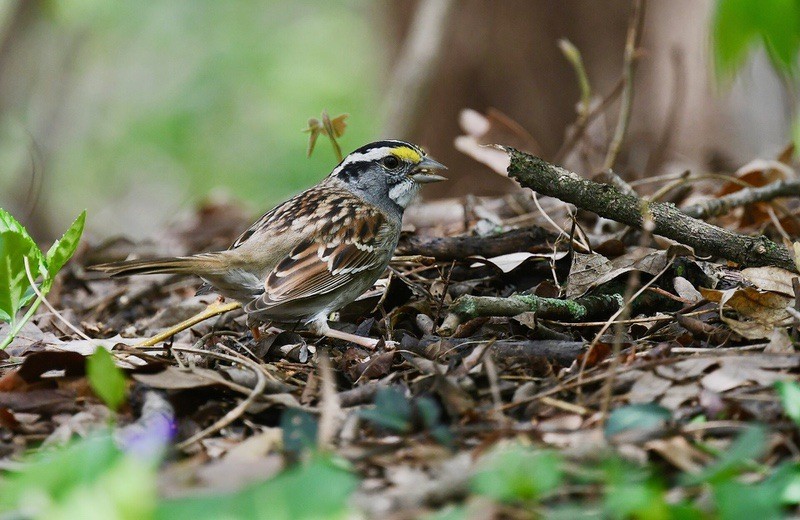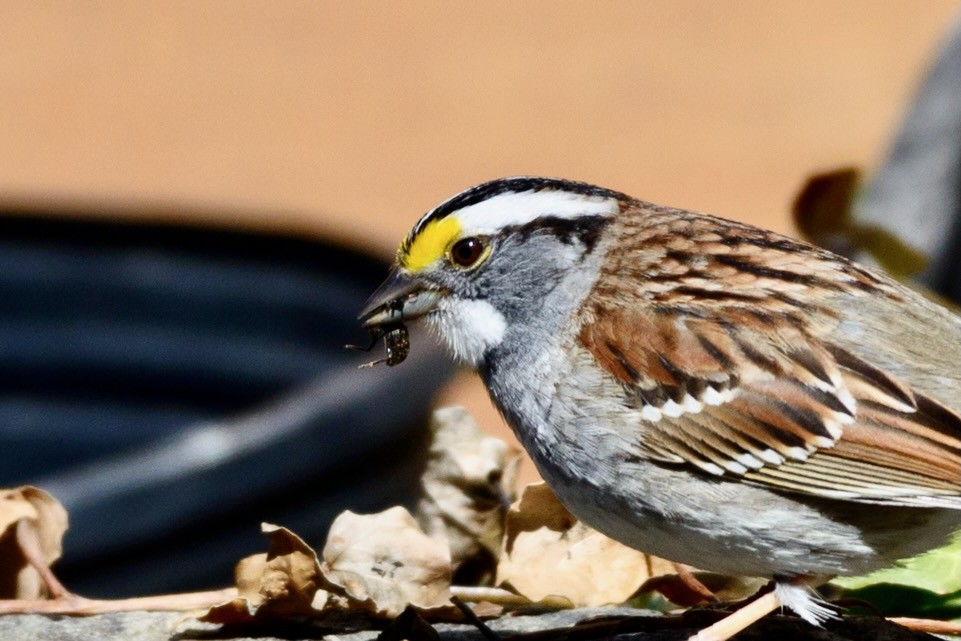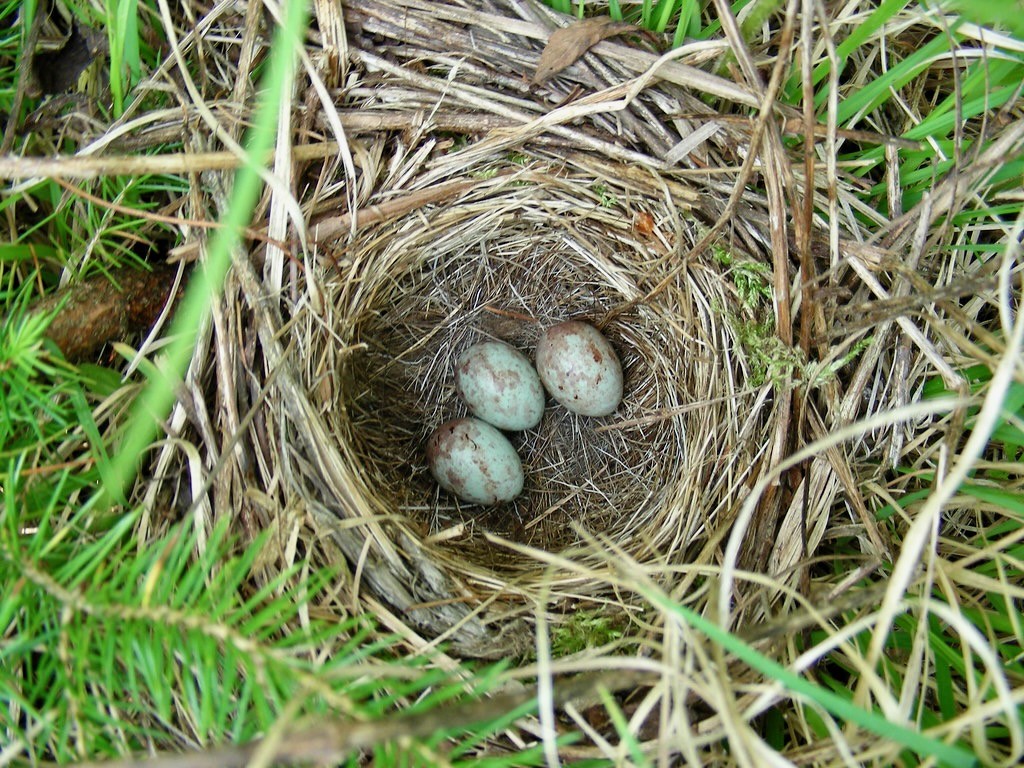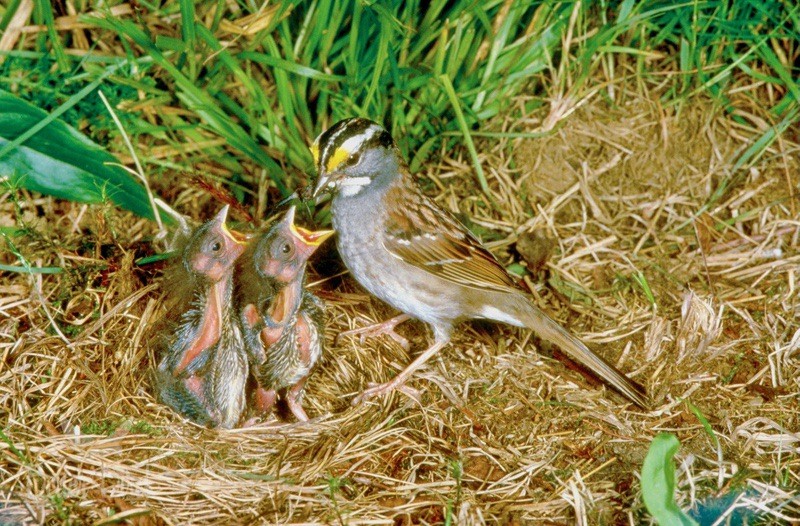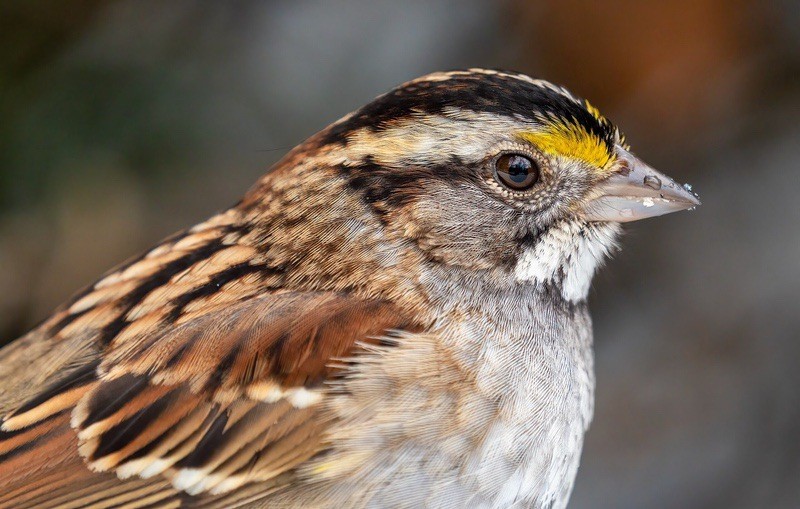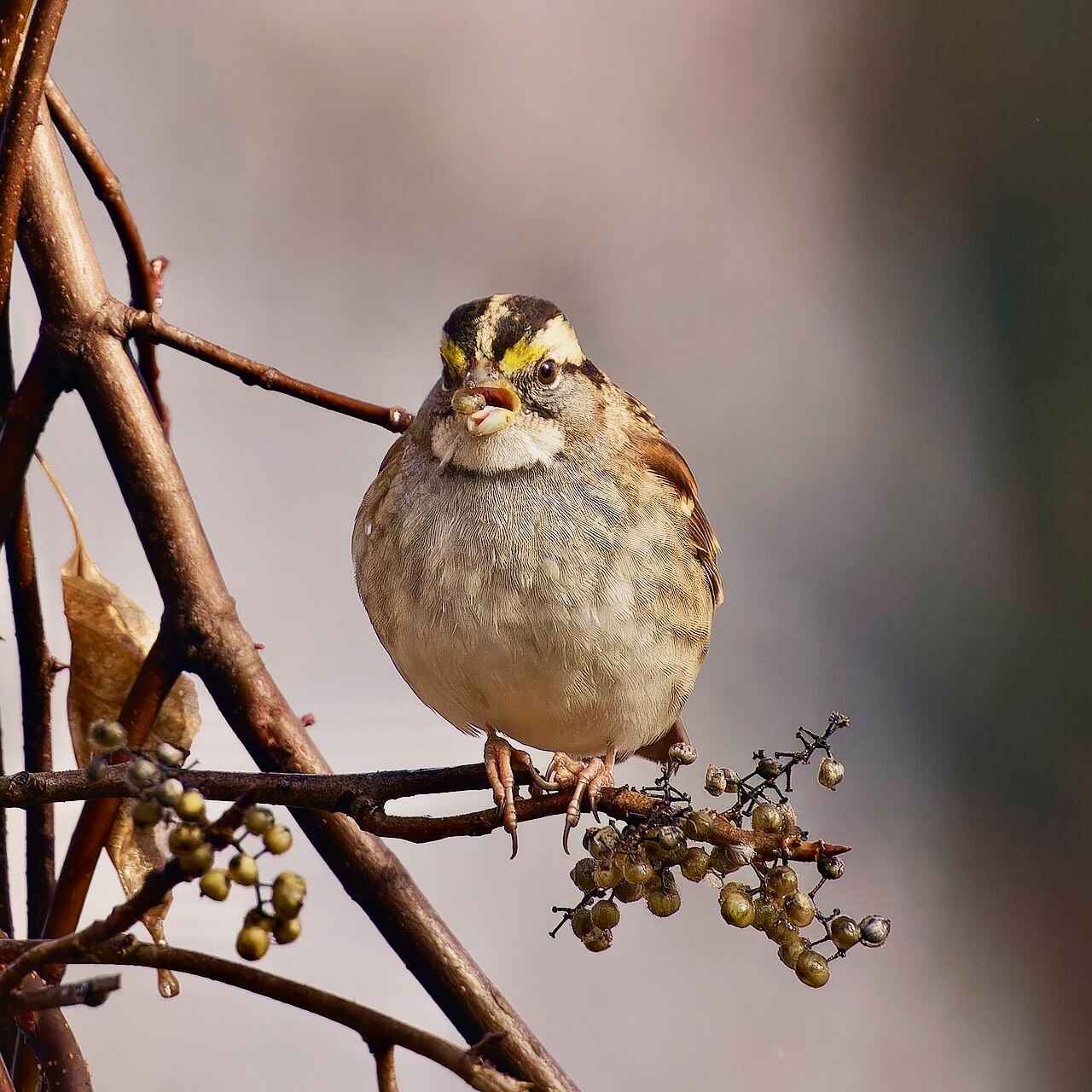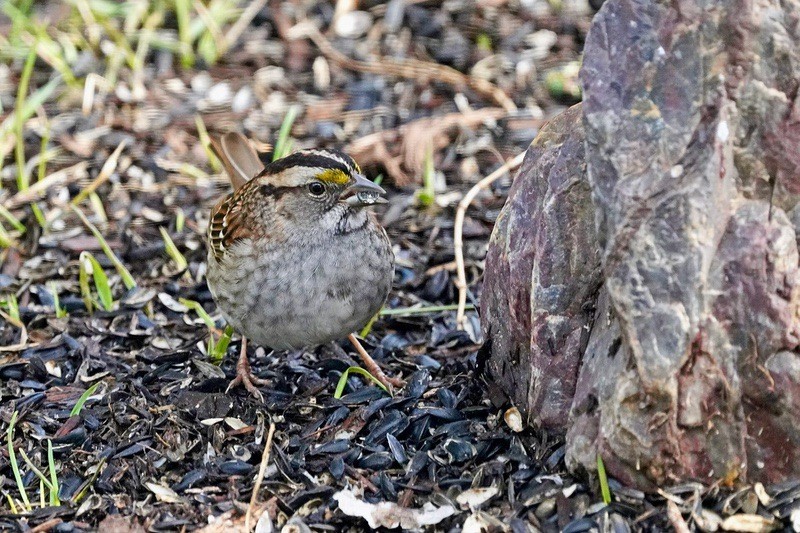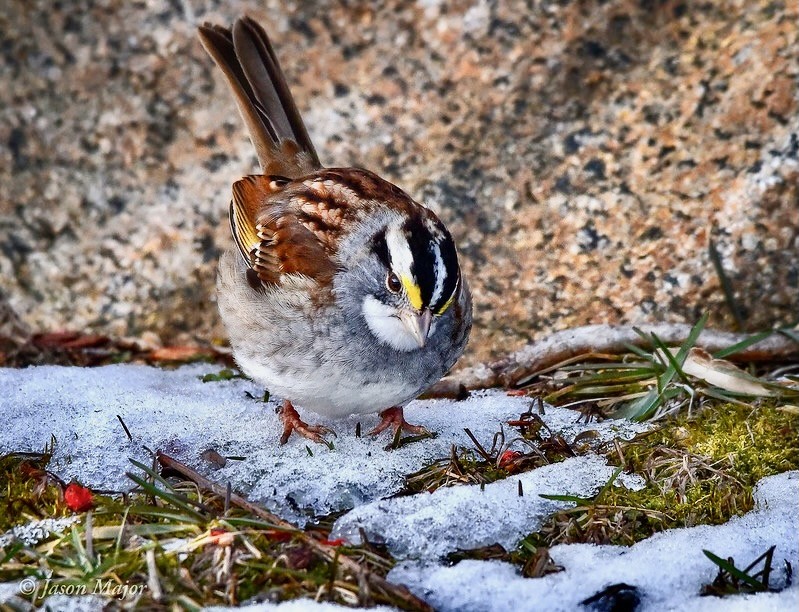White-throated Sparrow
The White-throated Sparrow is a reliable winter resident at Salter Grove but is absent from mid-May through September. It may occur singly or in groups of up to 11 along the edges of dense shrubbery throughout the park. Sightings have been reported at the entry of the causeway, on the lawn south of of the parking lot, near the Pump House on Audubon Trail, or near the storm drain northwest of the Dawn Redwood.
It is large and plump for a sparrow but actually difficult to see because it prefers to forage for seeds and insects on the ground within dense vegetation. Consistent plumage features include a thin black line through the eye, a white throat clearly outlined in black, and a small yellow patch over the eye. However, the broad eye brow can be either white or tan. The tan color was long thought to indicate immature individuals but is now understood to be an alternate form. Interestingly, white-browed birds tend to be more aggressive while tan-browed birds are more nurturing.
Apart from its faint "tink", or more explosive "chip" calls, its iconic song of "oh-sweet-Canada-Canada-Canada" signals its presence in early spring or late fall. Unlike most song birds, it not only sings during the breeding season but also in migration, and on its wintering ground.
Researchers studying song evolution examined White-throated Sparrow recordings from the 1950's and 1960's to established that the song lyric "-Canada-" was widespread across Canada. Sometime after the 1960's the shorter "-Cana-" appeared in a sparrow population in British Columbia, west of the Rockies. By 2002 all recorded males in this region whistled the two-syllable tune and by 2019 the new tune was recorded in Quebec.
Even the Rocky Mountains could not prevent the new song from becoming viral coast-to-coast. Geolocation studies show that birds from eastern and western breeding populations share the same wintering grounds in Texas. Moreover, although songbirds usually learn songs typical of their own neighborhood, young impressionable White-throated Sparrow males are exposed to singing males from anywhere across the continent.
The White-throated Sparrow was considered a common migrant and a rare winter visitor in Rhode Island in the late 1800's. First evidence of breeding in the state was documented in Exeter in 1960's which represented the southern limit of its breeding range. Data from the most recent breeding bird surveys documented only a few breeding birds. The warming climate will continue to move breeding populations into northern Canada and Alaska.
For more information:
https://www.allaboutbirds.org/guide/White-throated_Sparrow
https://www.audubon.org/field-guide/bird/white-throated-sparrow
https://en.wikipedia.org/wiki/White-throated_sparrow
https://www.audubon.org/magazine/fascinating-and-complicated-sex-lives-white-throated-sparrows
https://animaldiversity.org/accounts/Zonotrichia_albicollis/
https://www.audubon.org/news/how-white-throated-sparrows-new-tune-went-viral
Clarkson, C. E., Osenkowski, J. E., Steen, V. A., Duhaime, R. J., and Paton, W.C. (2023) The Second Atlas of Breeding Birds in Rhode Island. Rhode Island Department of Environmental Management Division of Fish and Wildlife. pp. 330-331.
Howe, Jr., R.H. and Sturtevant, E. (1899) The Birds of Rhode Island. p. 72.

